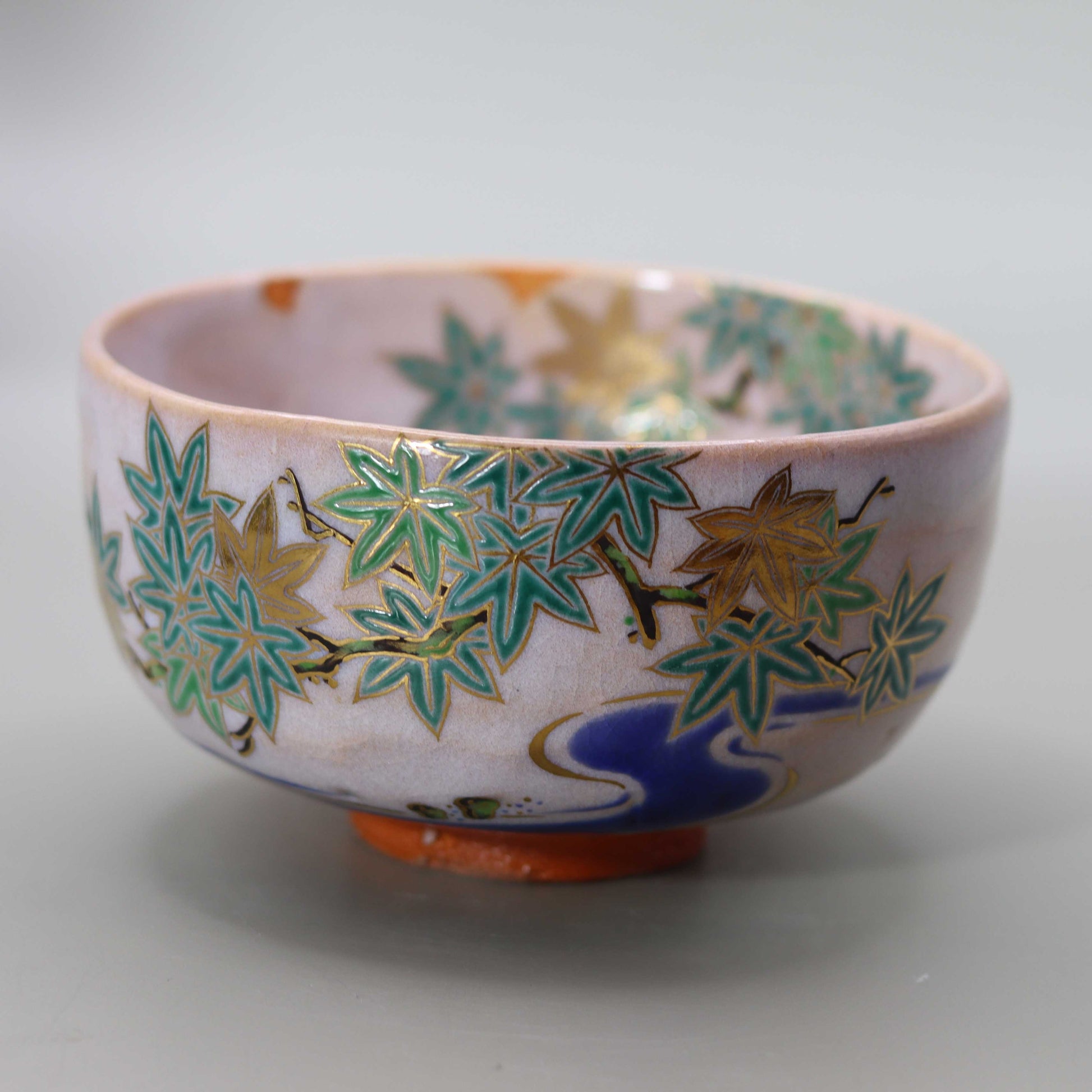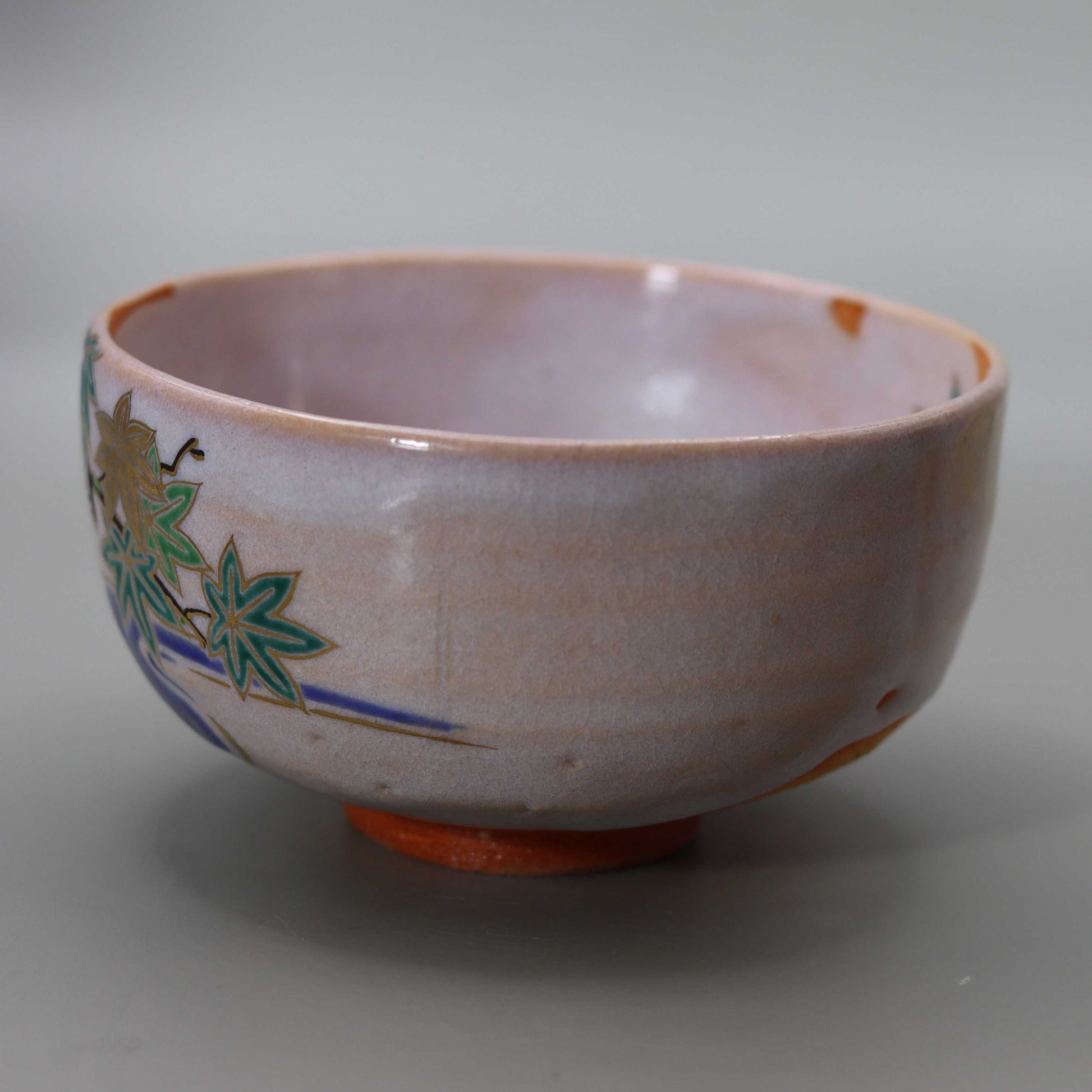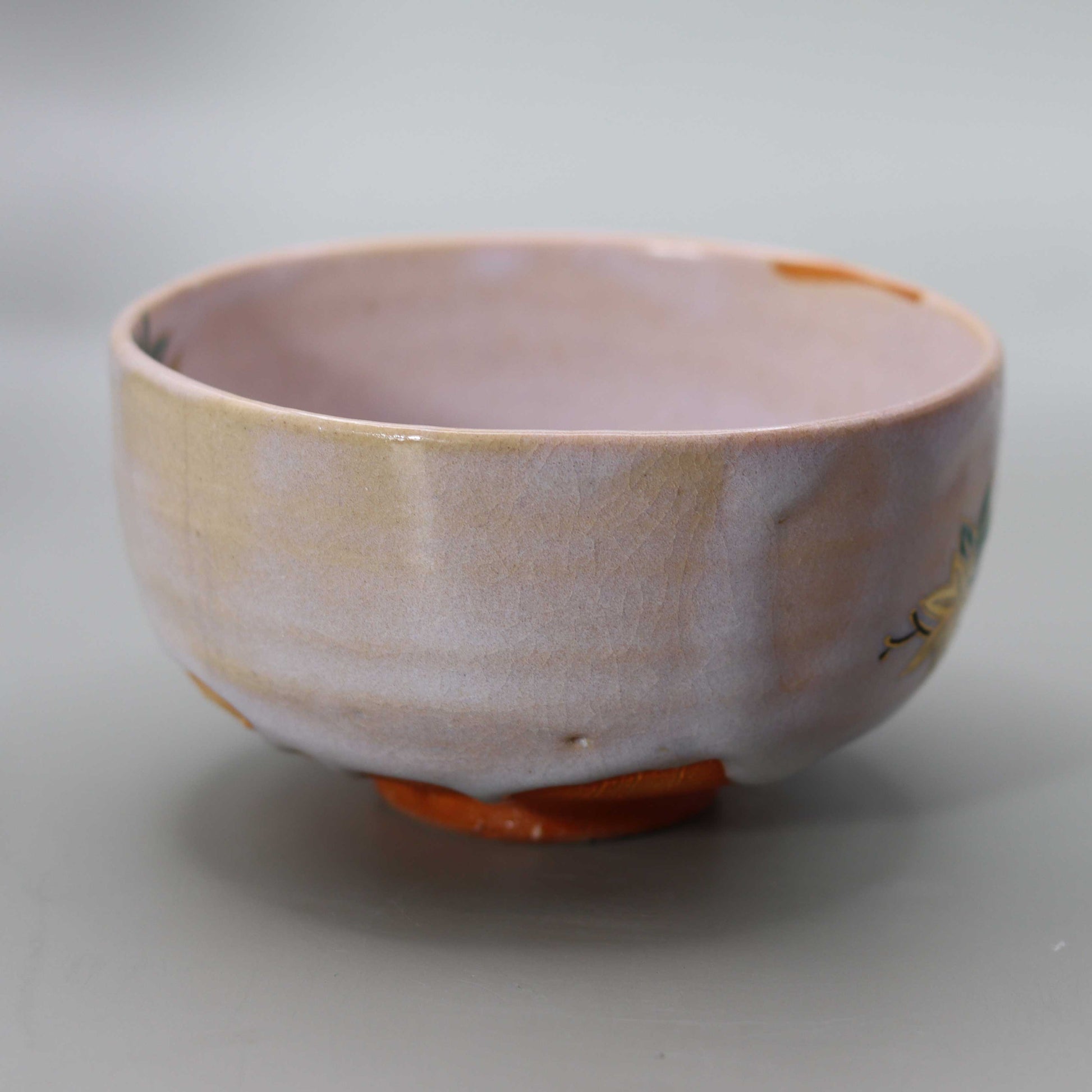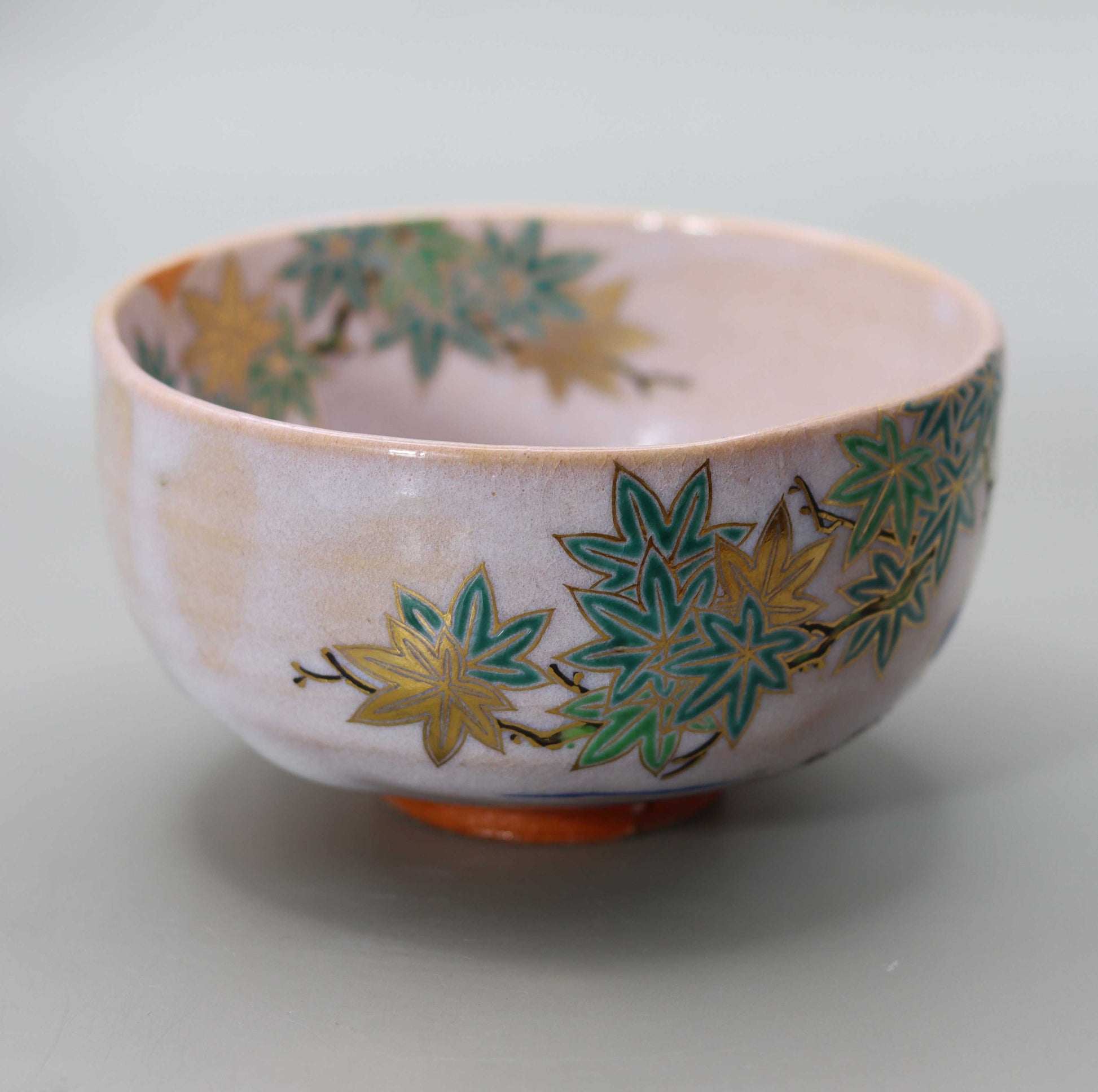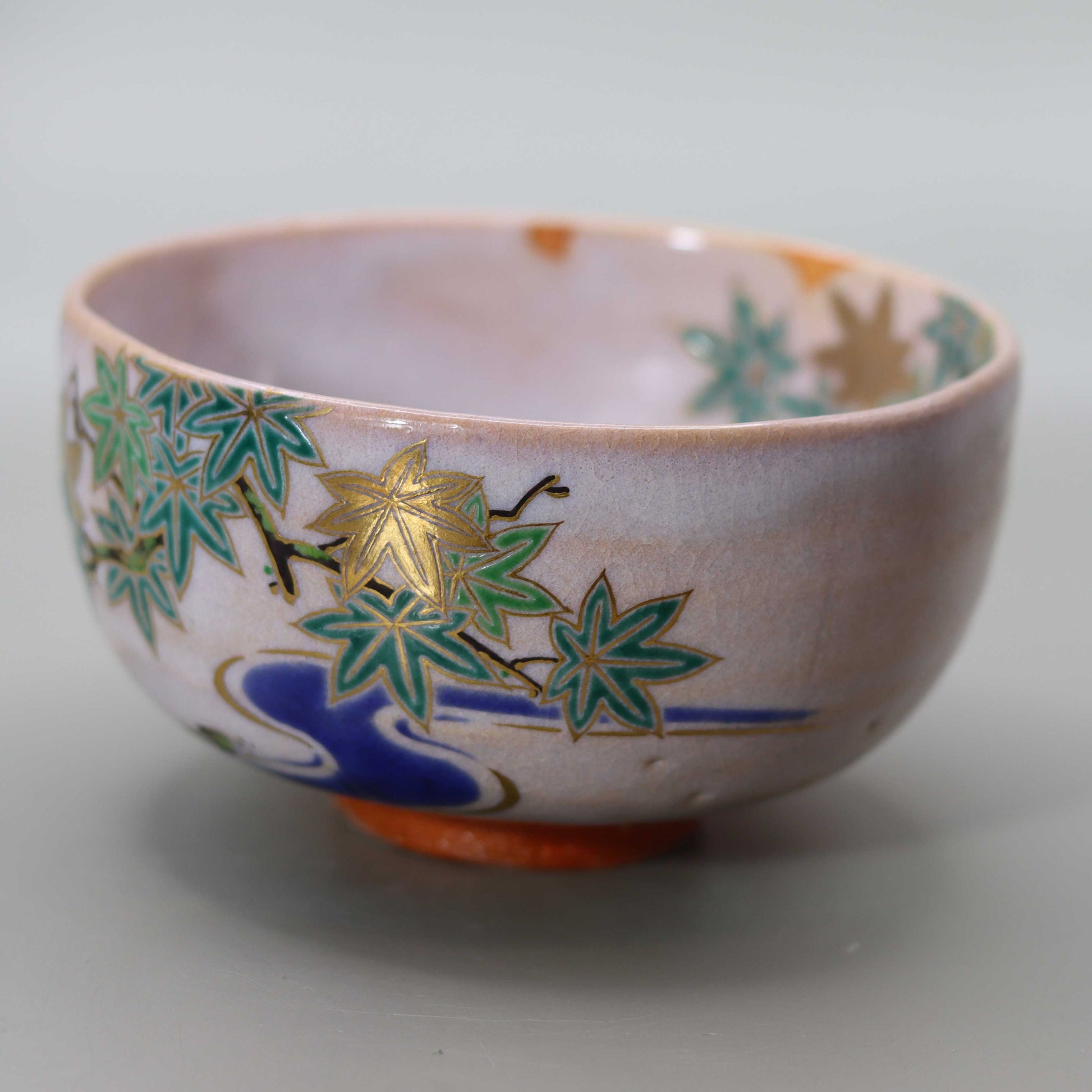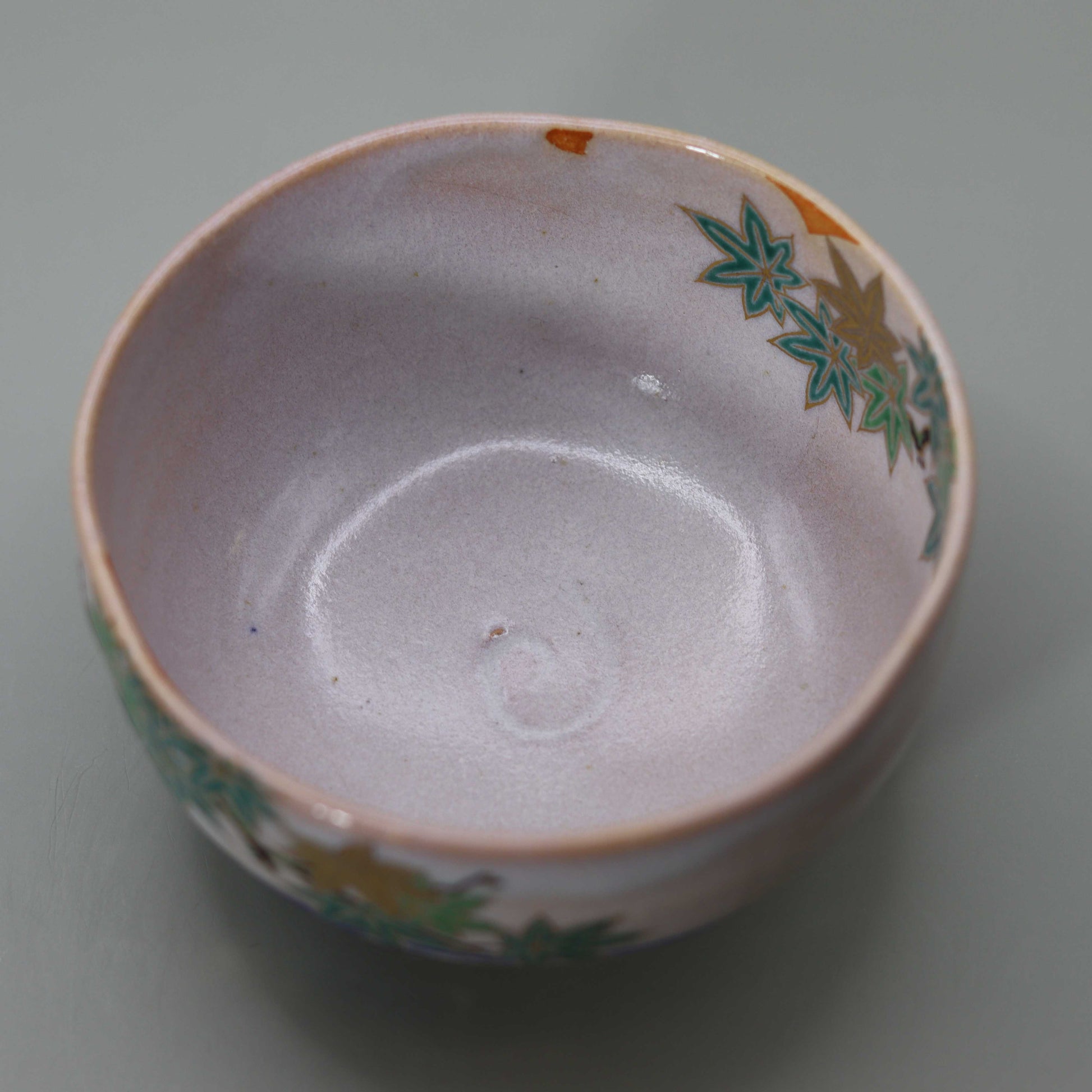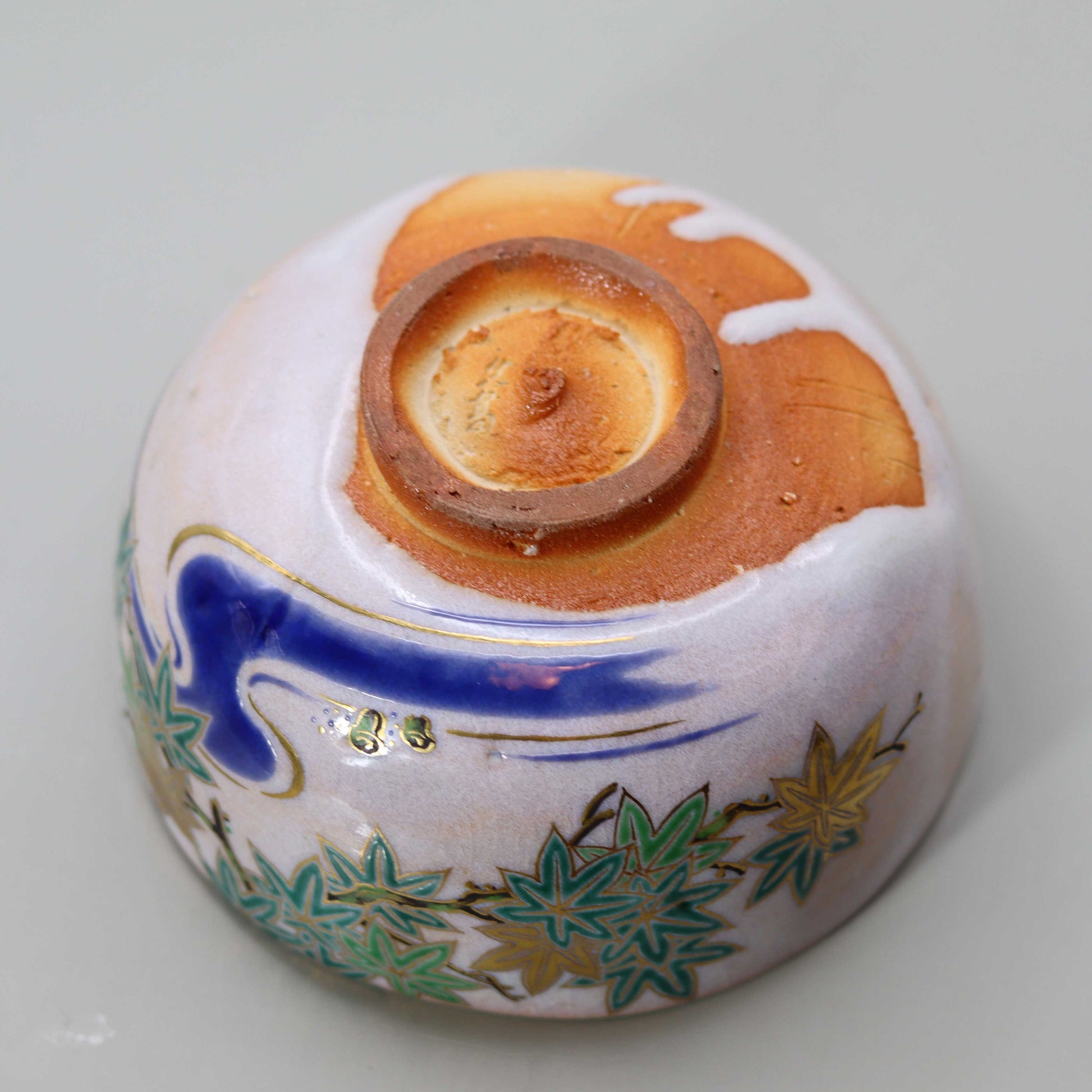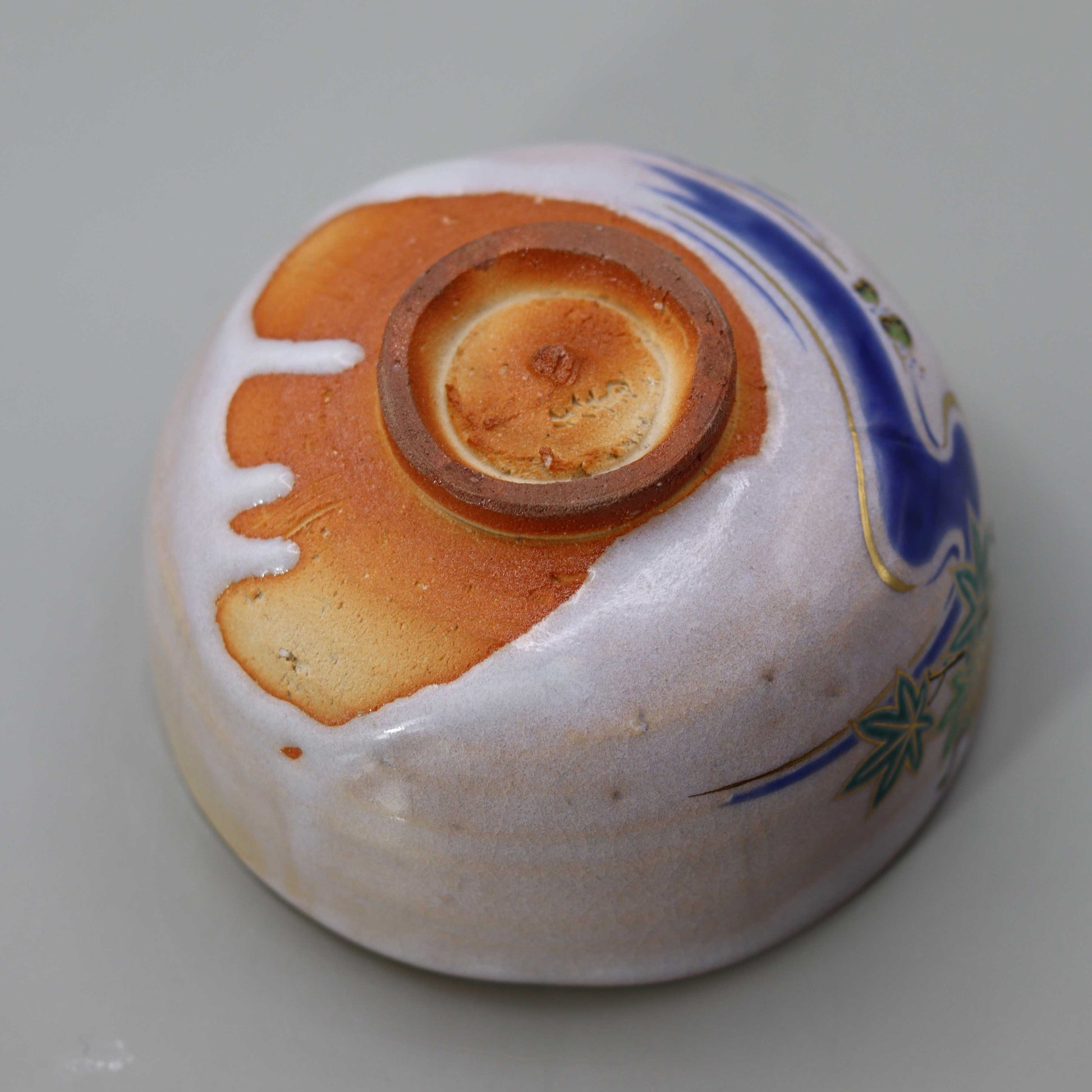Shigaraki clay straw ash glaze blue maple with running water tea bowl by kosai Miyagawa
Shigaraki clay straw ash glaze blue maple with running water tea bowl by kosai Miyagawa
Couldn't load pickup availability
Height: 7.0cm Width: 12.5cm
"Shigaraki Clay Straw Ash Glazed Tea Bowl with Green Maple Leaves and Flowing Water by Miyagawa Kosai" is a tea bowl symbolizing early summer, made using Shigaraki clay and traditional techniques of Makuzu ware. This tea bowl, decorated with a motif of green maple leaves and flowing water that evokes the atmosphere of early summer, is characterized by the soft and warm texture of the straw ash glaze while bringing out the uniqueness of Shigaraki clay, which has supported Japanese pottery culture since ancient times. This piece, which combines the long history and outstanding techniques of the Miyagawa family, is a wonderful example of how the beauty of Japan's nature and the sense of the seasons can be expressed in tea utensils.
Characteristics of Shigaraki clay: coarse texture and rich expressiveness
Shigaraki clay used in Shigaraki ware has been highly valued as a ceramic material since ancient times. Its greatest characteristics are its fire resistance and coarse soil texture. Shigaraki clay is mixed with wood-bush clay, which makes it highly plastic and suitable for making large works and thick vessels. This clay is also suitable for a wide range of molding techniques, and is characterized by its flexibility in various pottery methods such as hand-twisting and wheel-throwing. In particular, when fired by oxidation, Shigaraki clay is fired to a pale yellow color, and the white glaze color stands out vividly. Shigaraki clay also contains a lot of feldspar, and when feldspar grains melt during firing and float to the surface of the vessel, they create a unique landscape. This pattern, known as the "milky white granules," is symbolic of the unique texture of the clay of Shigaraki ware, and this tea bowl fully demonstrates this texture.
Green maple leaves and flowing water patterns - reflecting the atmosphere of early summer
Another charm of this tea bowl is the green maple and flowing water motif. The green maple symbolizes the season of early summer, when the young maple leaves turn lush. May is the best time to see the green maples, and the fragrant breeze of early summer rustles the green leaves, bringing a sense of freshness. The green maple, which represents the atmosphere of this season, is a motif often used in the world of tea ceremony and plays a role in bringing a cool atmosphere to the tea ceremony. The beautiful green maple after the rain is depicted, and its youthful green gives a sense of the coolness of early summer. The addition of the flowing water motif further emphasizes the sense of freshness. The flowing water motif gives movement to the design of the tea bowl, creating a visual effect as if the water is continuously flowing. This combination of green maple and flowing water can be seen not only in tea utensils, but also in hanging scrolls and other crafts, allowing you to enjoy the beauty of early summer throughout the tea room.
The charm of straw ash glaze - the traditional techniques of the Miyagawa Kosai family
The straw ash glaze is a glazing technique that has been carefully handed down through the generations of the Miyagawa Kosai family. The straw ash glaze gives the surface of the vessel a soft, bluish milky shine, creating a plump and elegant texture. This glaze has a slightly different appearance depending on the clay and firing conditions, so you can enjoy a variety of different styles, such as a warm reddish finish or a cool bluish-white finish. In particular, this tea bowl has an exquisite harmony between the simple clay surface of the Shigaraki clay and the mellow luster of the straw ash glaze. The rough texture of the Shigaraki clay is smoothly covered by the glaze, and the surface of the bowl feels warm to the touch. This technique is a symbol of Makuzu ware, and the tradition that has been passed down by the Miyagawa family for over 200 years still lives on today.
The History of Makuzu Ware - The Ceramic Tradition of the Miyagawa Family
The history of Makuzu ware spans more than 330 years. Its beginnings date back to when Yukan Miyagawa Kobei Masakazu opened a kiln in Kyoto during the Jokyo era (1684-1687). Later, Miyagawa Chozo V established a kiln in Makugahara (now Maruyama Park) and spread the name of Makuzu ware. Chozo's younger brother, Toranosuke, moved to Yokohama and became the first Makuzu Kozan, and the Miyagawa family's pottery techniques and aesthetic sense were highly praised both in Japan and overseas. Meanwhile, Miyagawa Kosai I, who inherited the Jihei family, devoted himself to the production of tea utensils and sencha tea utensils while preserving the traditions of Kyoto ware. The current Miyagawa Kosai VII continues to create works that incorporate modern sensibilities while inheriting the traditions of Makuzu ware. Makuzu ware is also housed in prestigious art museums around the world, such as the Victoria and Albert Museum (London) and the Permanent Mission of Japan to UNESCO (Paris), and its techniques and beauty are internationally recognized. This piece takes advantage of the characteristics of Shigaraki clay to skillfully express the atmosphere of early summer. The motif of green maple leaves and flowing water gives the bowl a sense of coolness and elegance, while the soft luster of the straw ash glaze envelops the entire bowl. This tea bowl, which combines Shigaraki clay with the traditional techniques of the Miyagawa family, is a truly artistic piece that incorporates Japanese nature and a sense of the seasons into the world of tea ceremony. This tea bowl, which crystallizes the techniques and aesthetic sense of the long history of the Miyagawa family, will be a presence in the world of tea ceremony that will bring comfort to the user while allowing them to feel the change of seasons.
Share

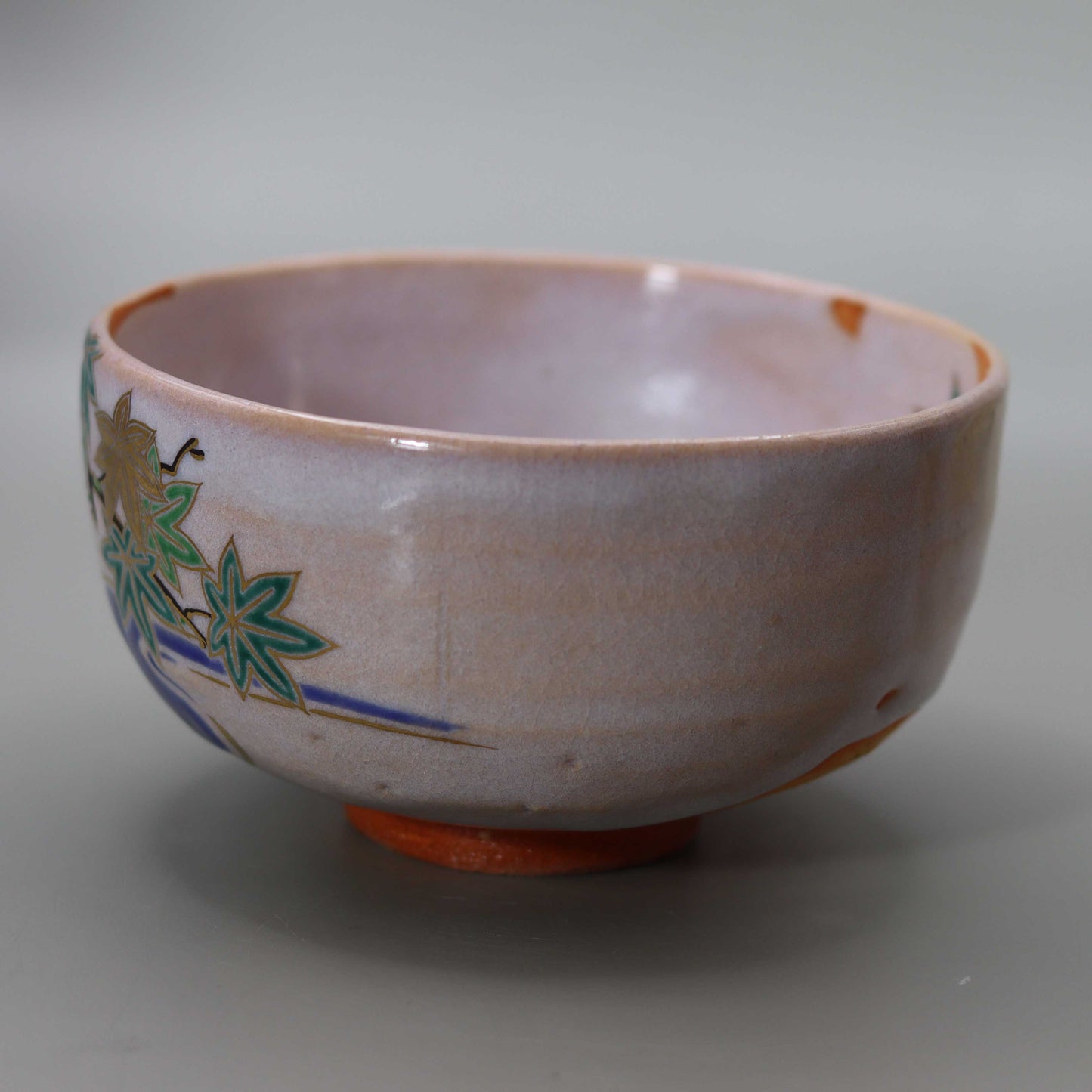
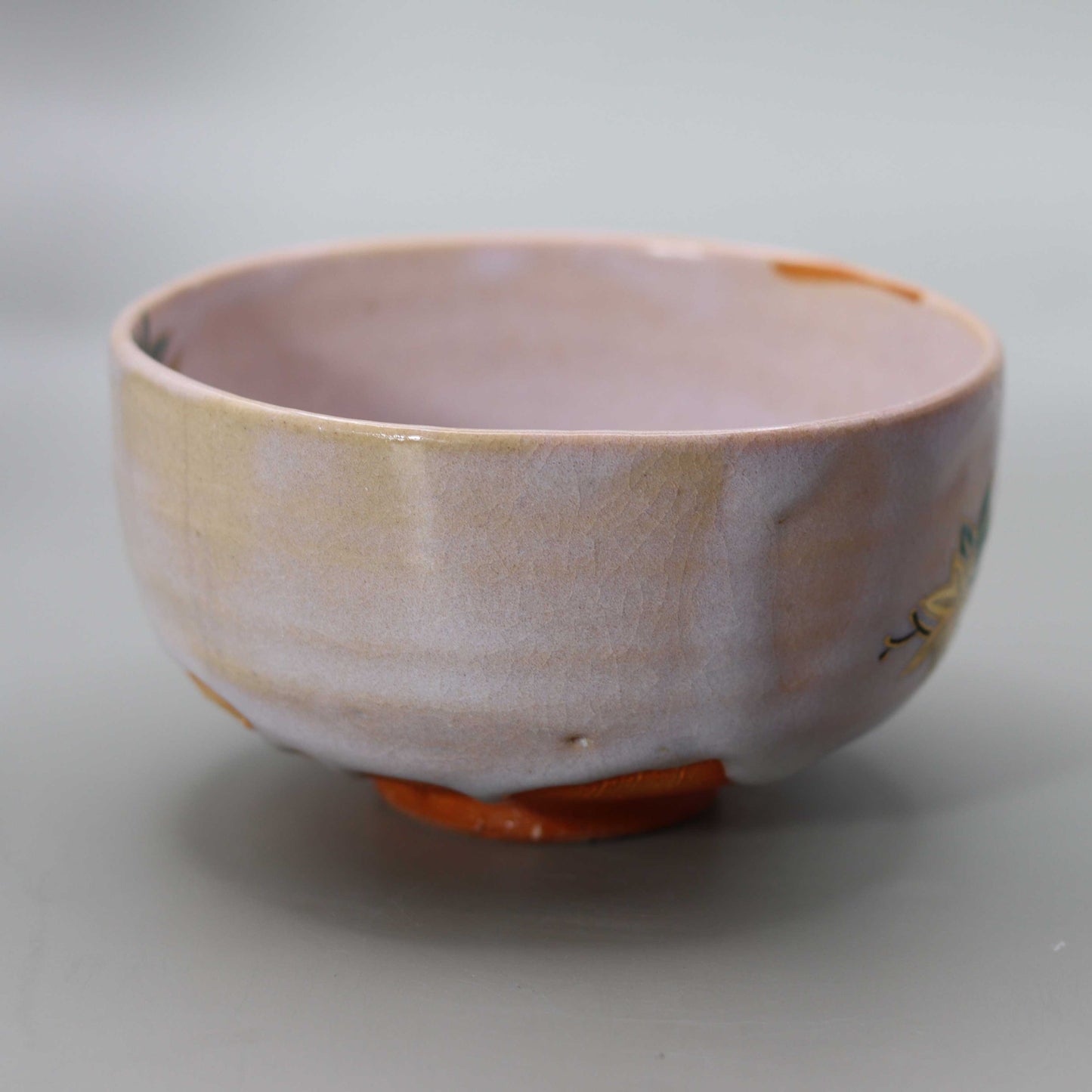

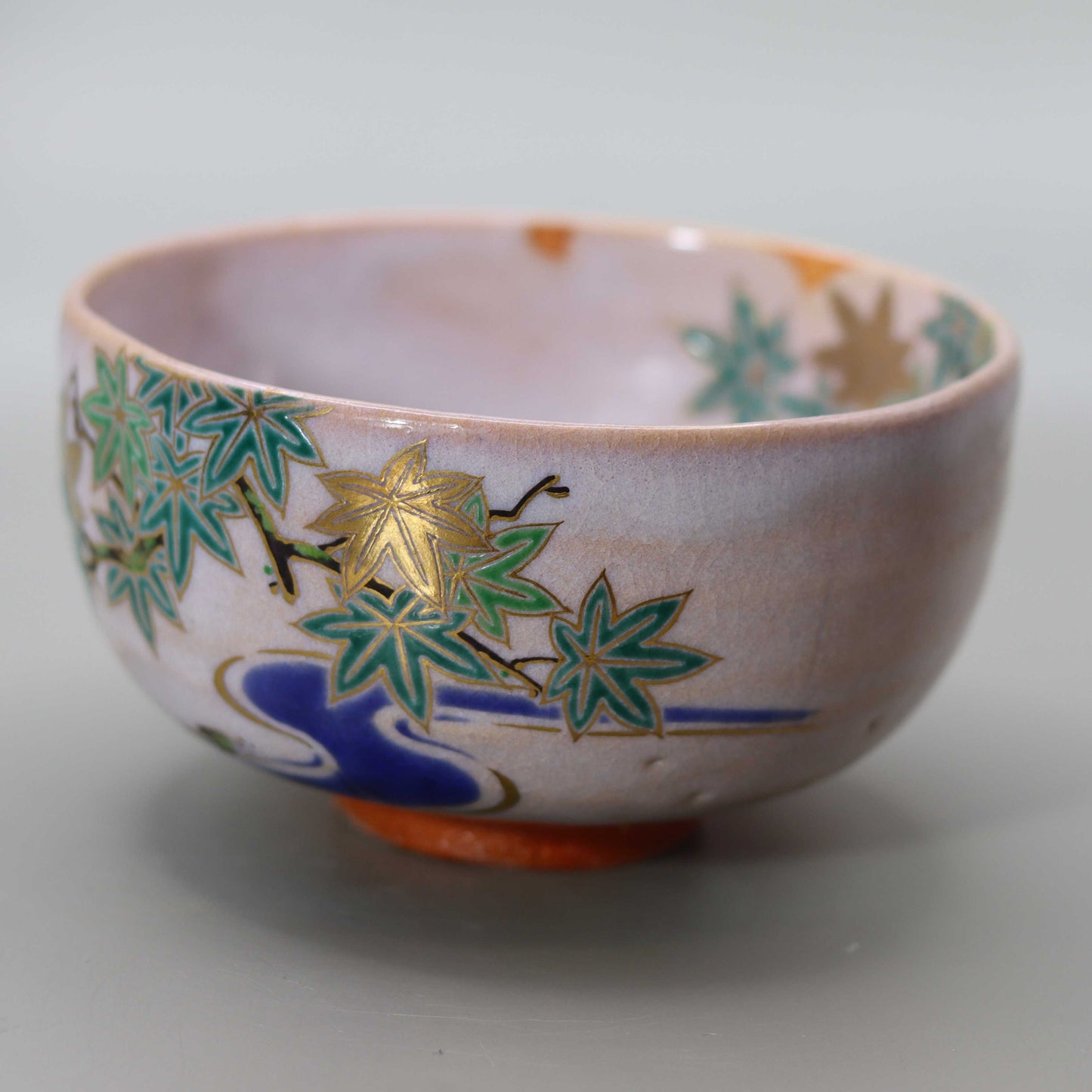


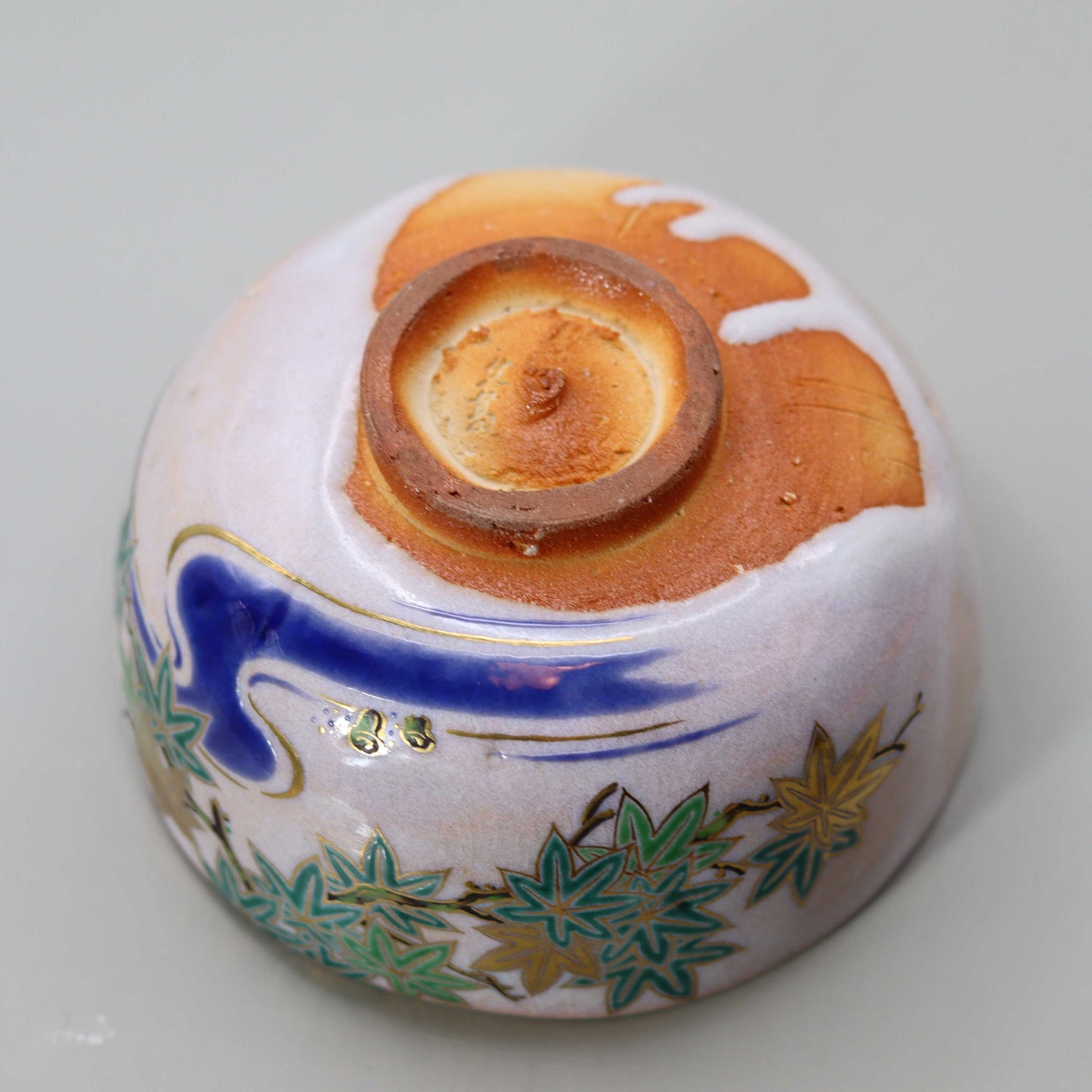
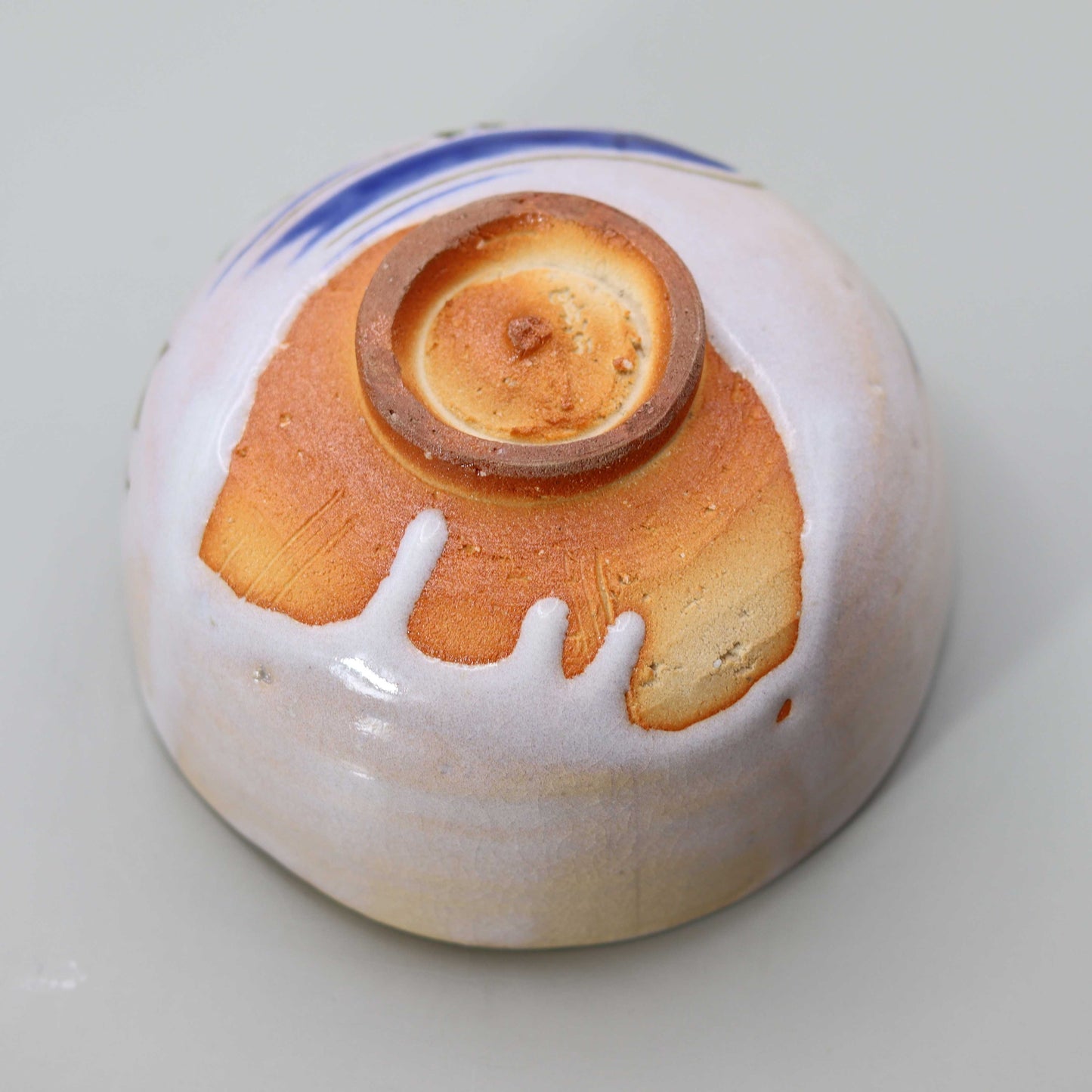
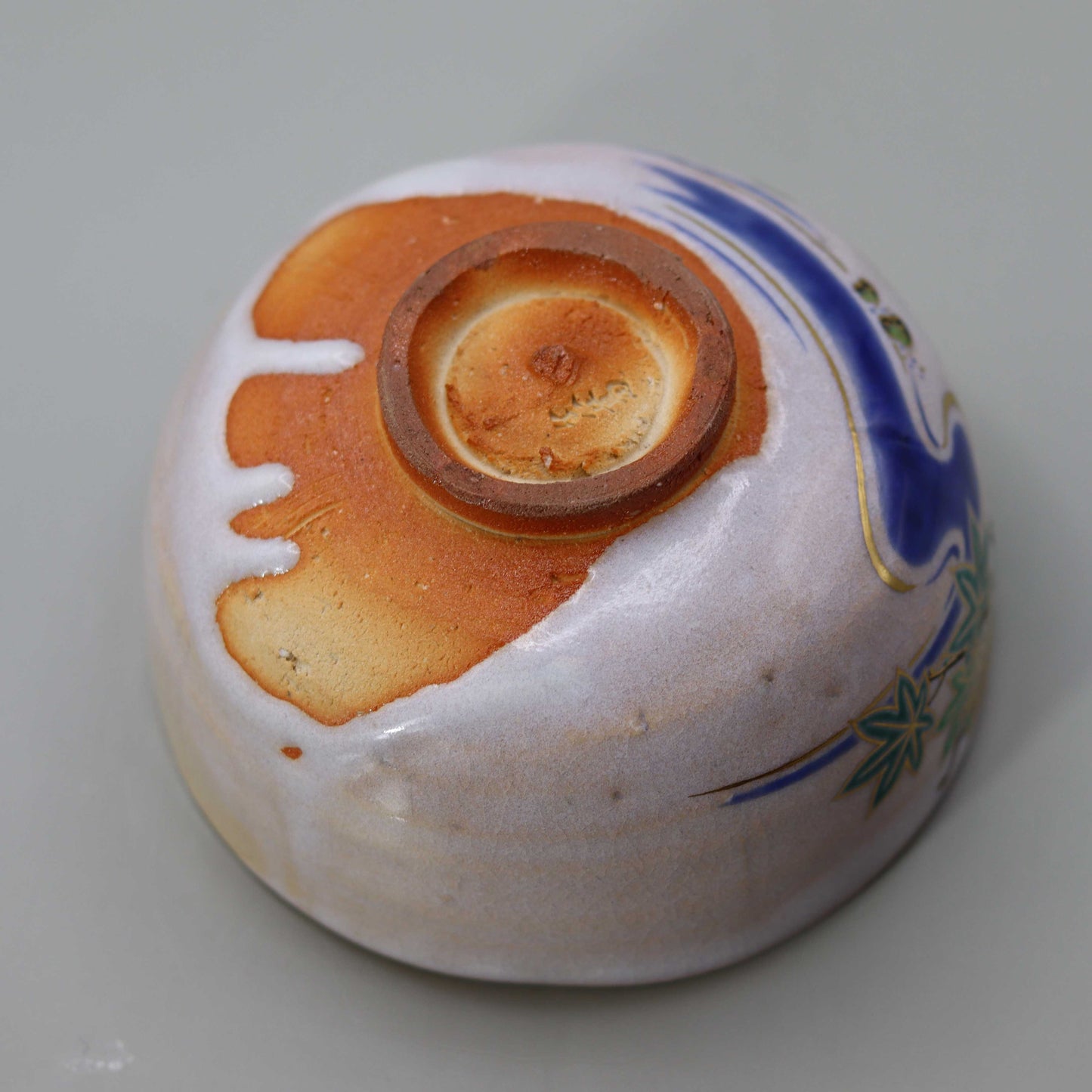
Multi-Column
-
[I will send it to you quickly and carefully]
We carefully package each product in a way that suits it best.
Also, delivery times vary depending on the piece (vessel, etc.).
Items that already come with a box will be shipped within 1-3 days of the order date.
For items that require a box to be made after your order, it will take approximately 30 days for production to be completed and then shipped.
In either case, once we have confirmed your order, we will contact you by email to inform you of the delivery date.
-
[Requests when purchasing pottery]
Even products that look the same may differ slightly in color, shape, size, etc.
The way the glaze is used, the power of the kiln, the firing method, the season, and the humidity also affect the appearance of the pottery.
Please understand the individuality of each piece of pottery and enjoy the unique warmth of handmade.

